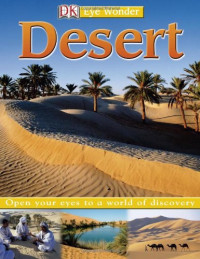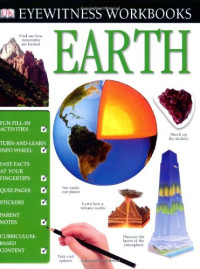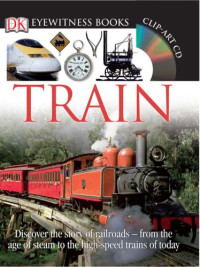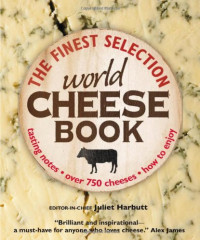- Main
- Cookbooks, Food & Wine
- The New Sotheby's Wine Encyclopedia
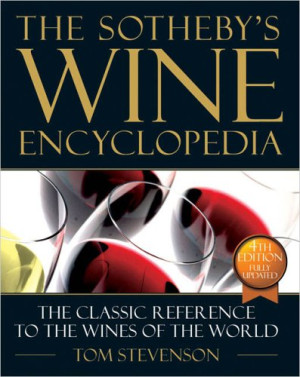
The New Sotheby's Wine Encyclopedia
Tom Stevenson你有多喜欢这本书?
下载文件的质量如何?
下载该书,以评价其质量
下载文件的质量如何?
Perfect for novices, wine enthusiasts, or experts, this book's easy-to-use style and practical advice make it an unrivaled visual reference. Updated and expanded with the latest information on all the wine-producing areas of the world.
内容类型:
书籍年:
2005
出版:
4
出版社:
DK ADULT
语言:
english
页:
662
ISBN 10:
0756613248
ISBN 13:
9780756613242
文件:
PDF, 51.56 MB
您的标签:
IPFS:
CID , CID Blake2b
english, 2005
在1-5分钟内,文件将被发送到您的电子邮件。
该文件将通过电报信使发送给您。 您最多可能需要 1-5 分钟才能收到它。
注意:确保您已将您的帐户链接到 Z-Library Telegram 机器人。
该文件将发送到您的 Kindle 帐户。 您最多可能需要 1-5 分钟才能收到它。
请注意:您需要验证要发送到Kindle的每本书。检查您的邮箱中是否有来自亚马逊Kindle的验证电子邮件。
正在转换
转换为 失败
关键词
关联书单
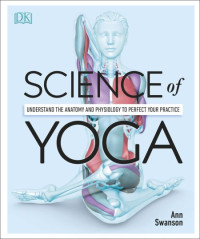
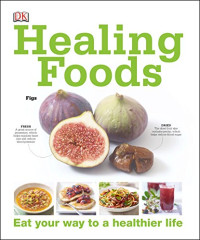
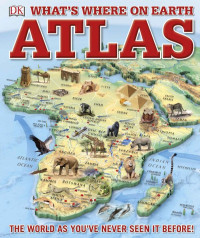
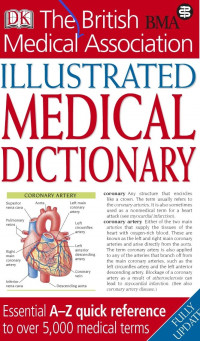
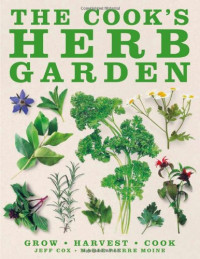

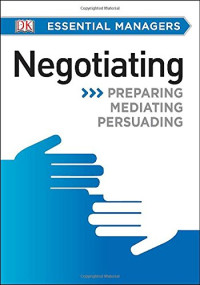
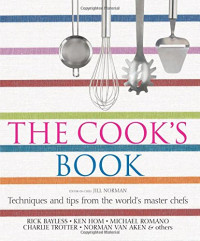




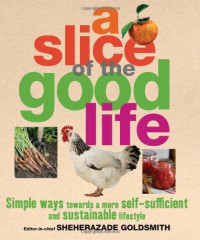
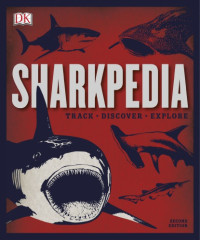





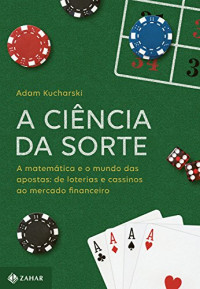

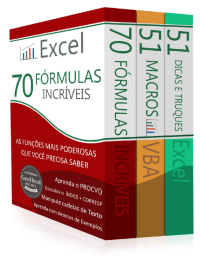
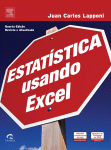


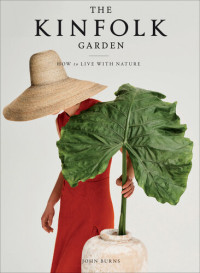
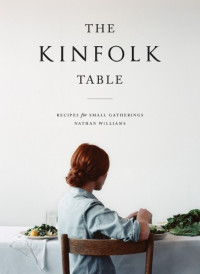
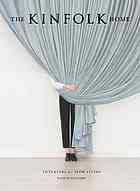

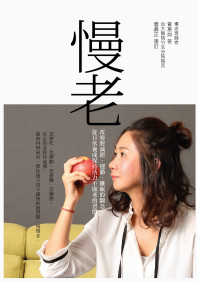
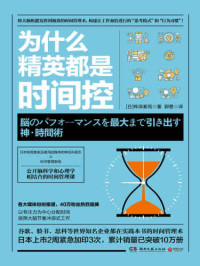
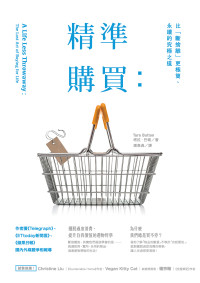








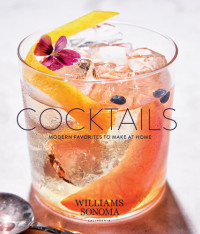
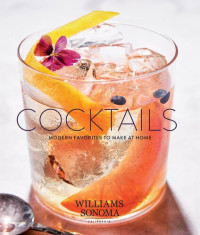
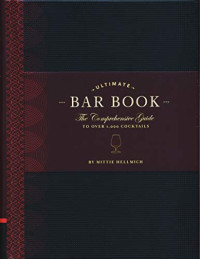
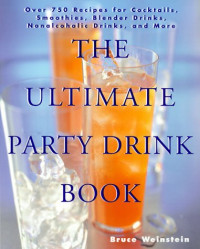
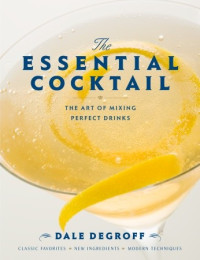
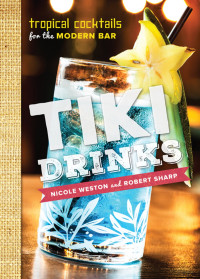
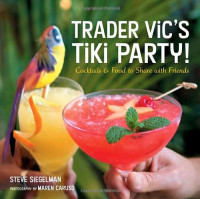
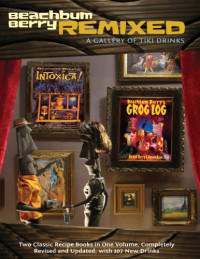






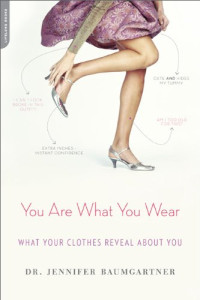
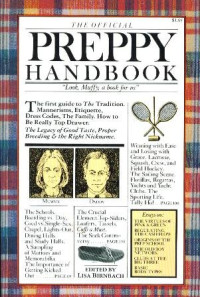
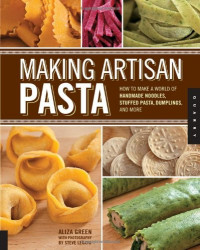
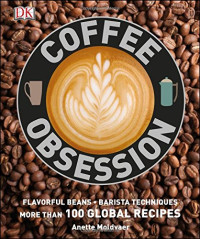
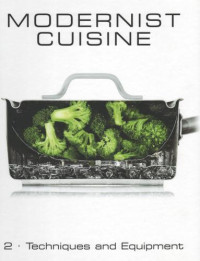
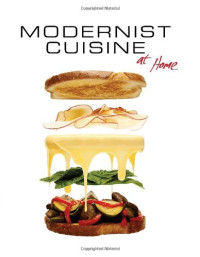
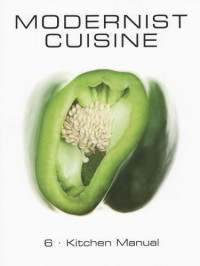
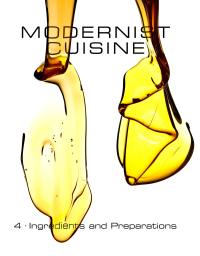
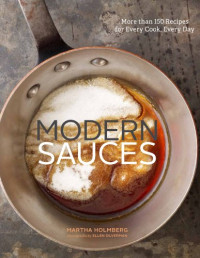
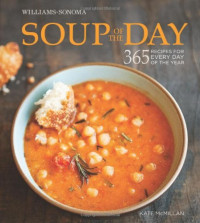
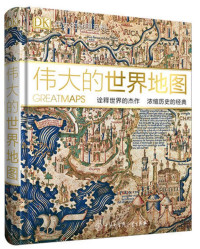

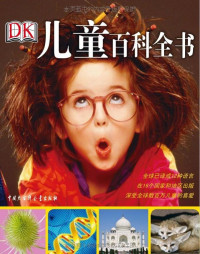
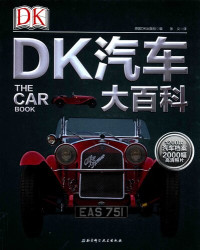
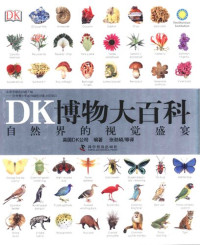




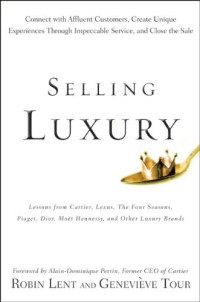
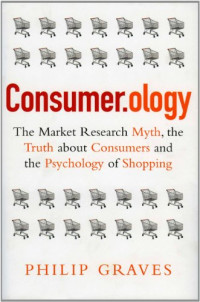





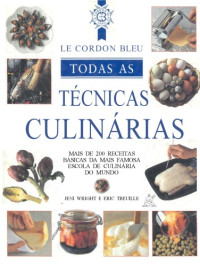
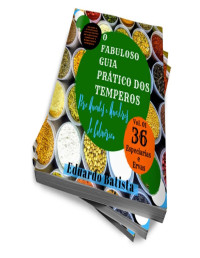
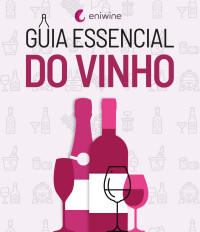
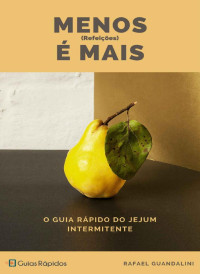
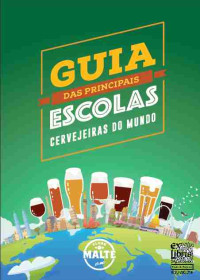
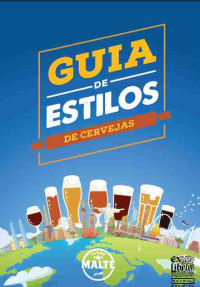
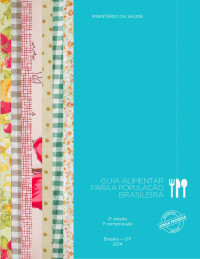
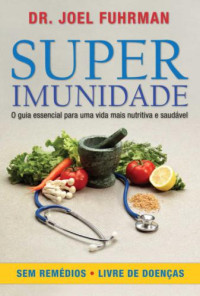

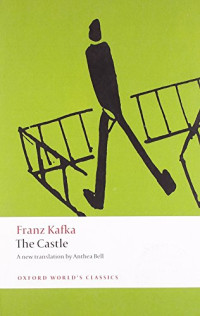
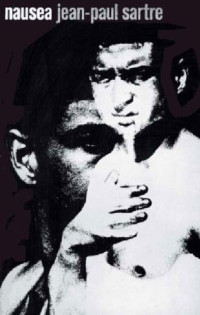
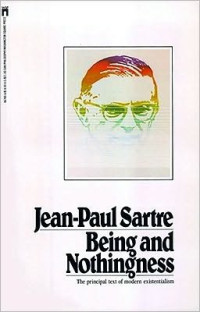
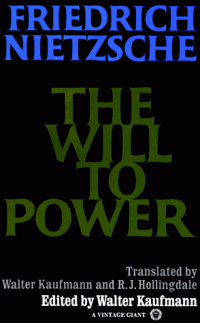
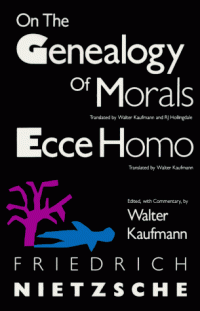
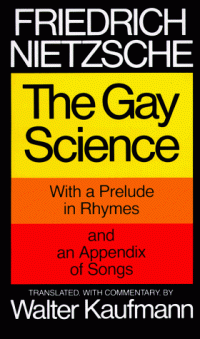
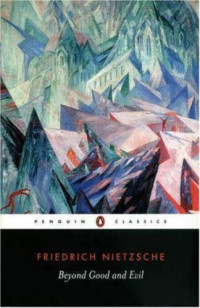
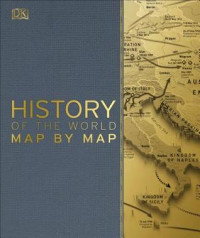

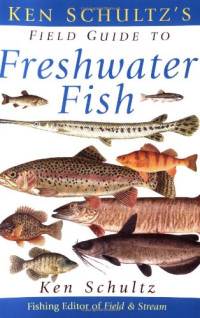
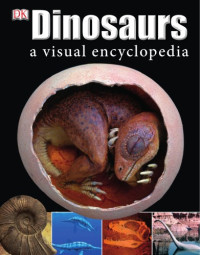
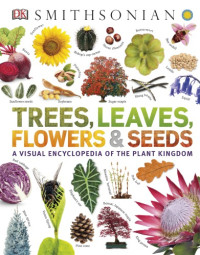


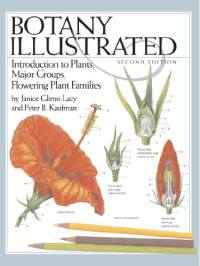


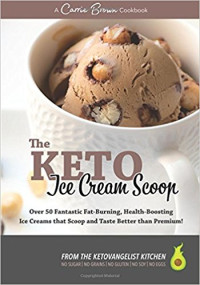
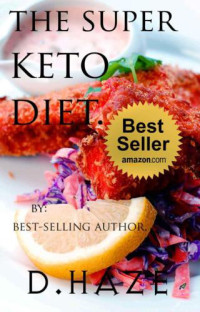
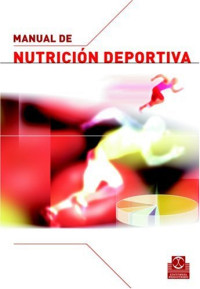
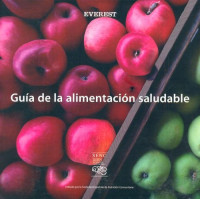
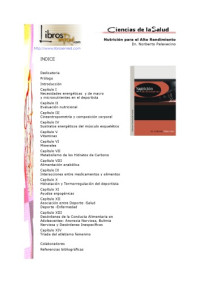


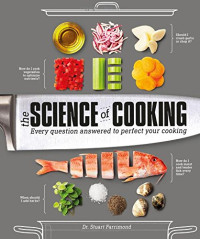

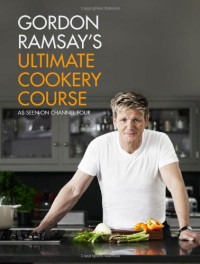

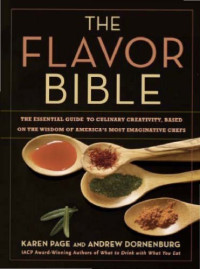

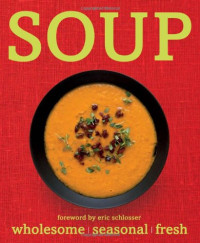
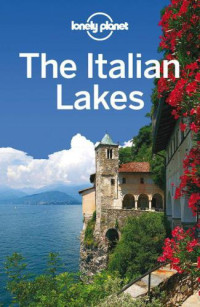
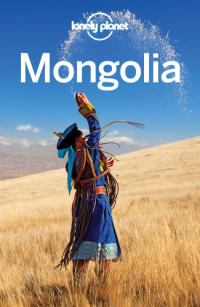
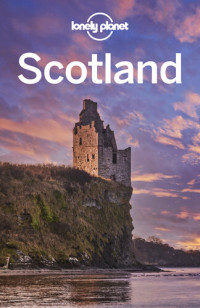
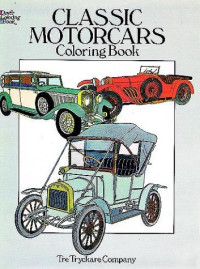

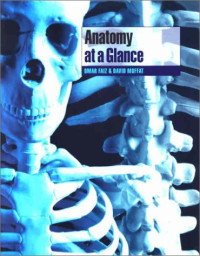

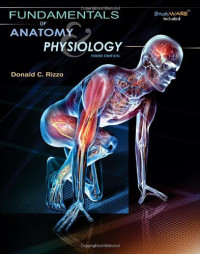

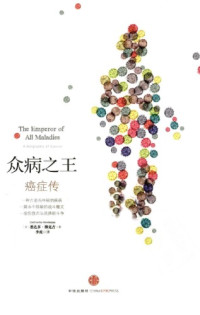

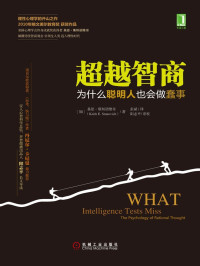
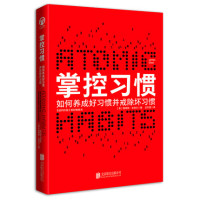


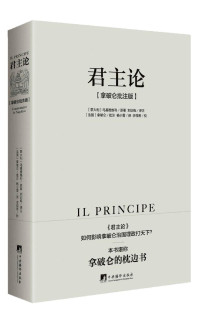








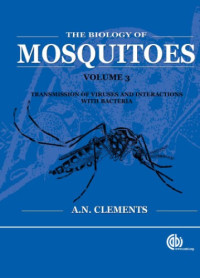
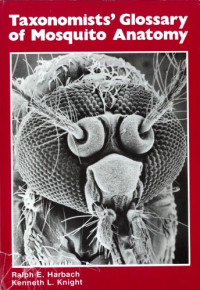
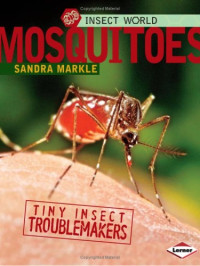
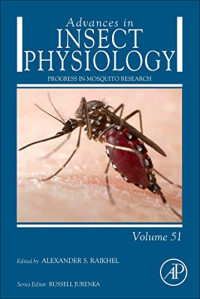
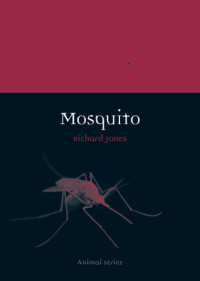
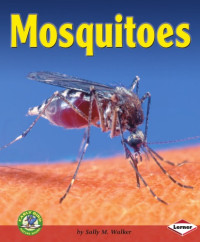

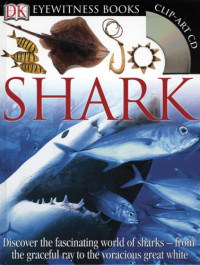

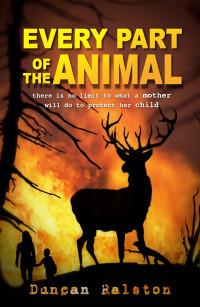
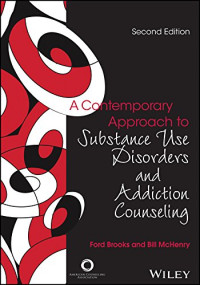
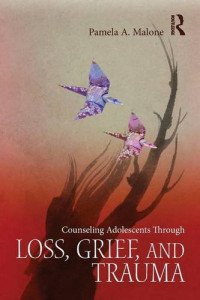



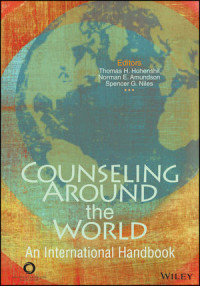
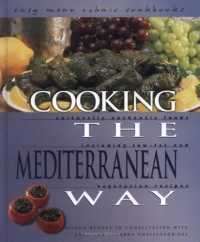
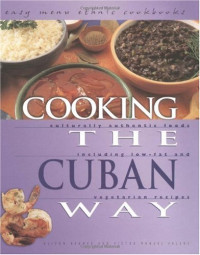
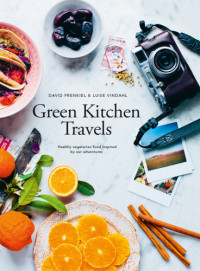
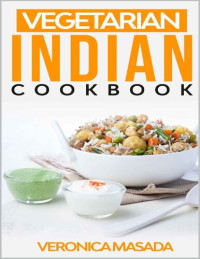
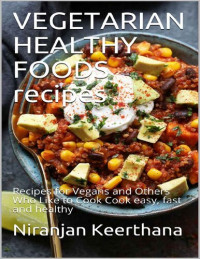


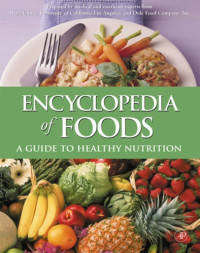
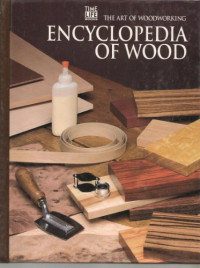

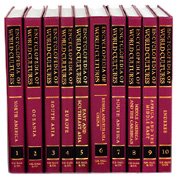
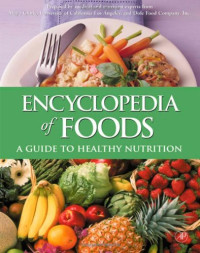
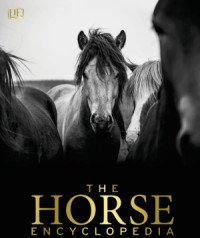

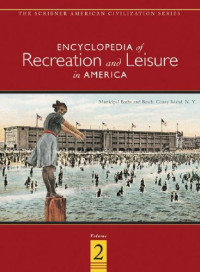





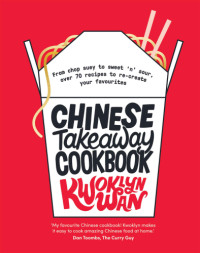
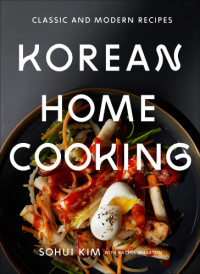

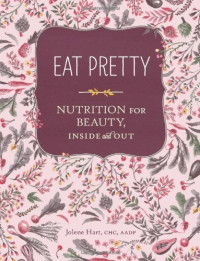
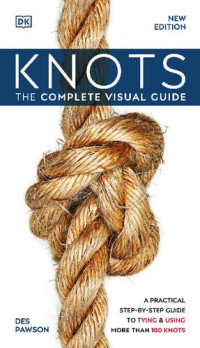
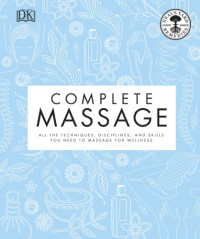
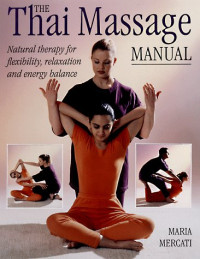
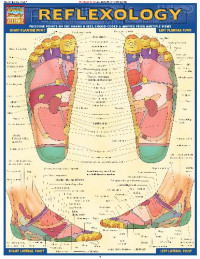




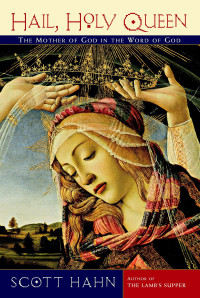







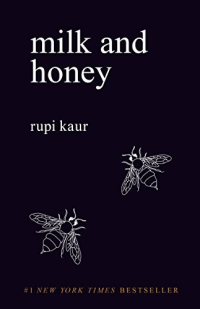
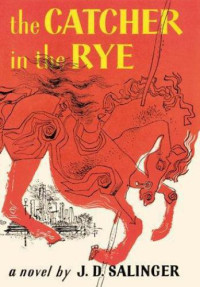


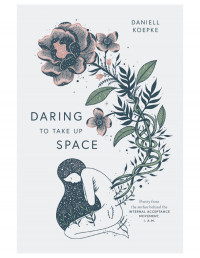
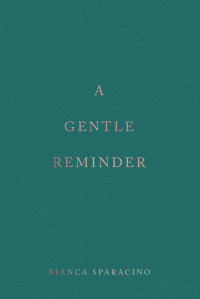


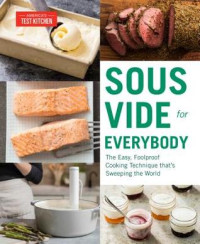

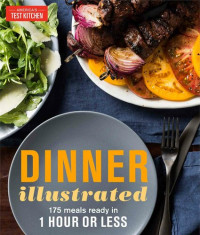
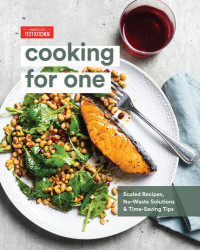
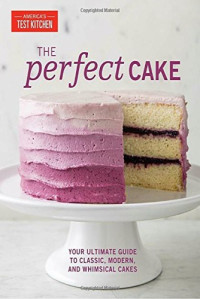
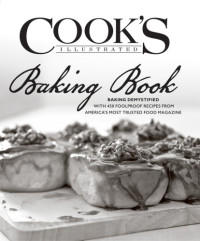
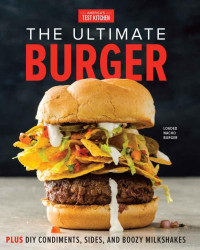
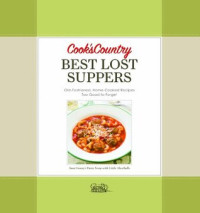
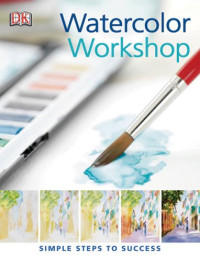




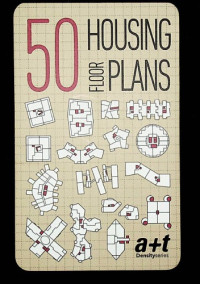
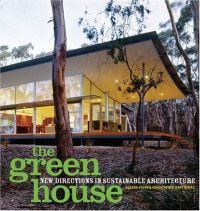
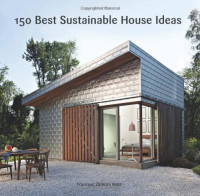
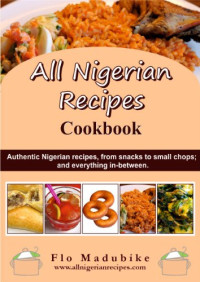



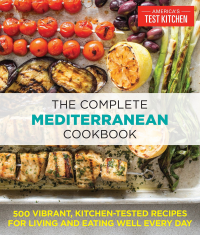
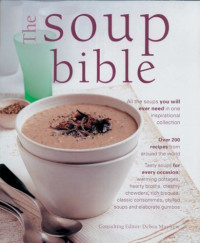
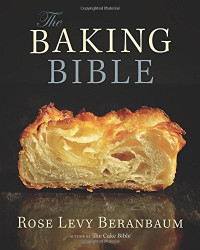
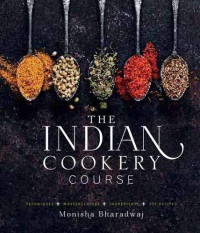
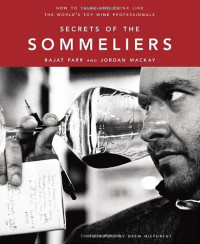
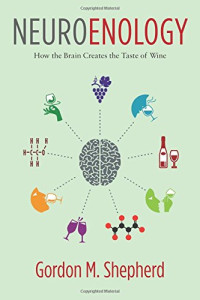
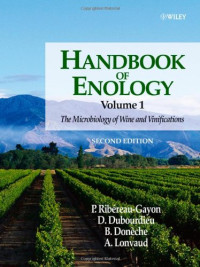
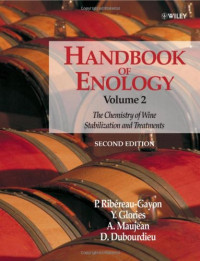

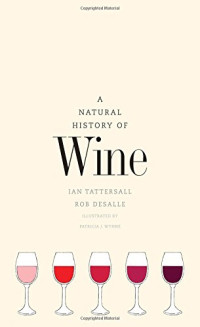
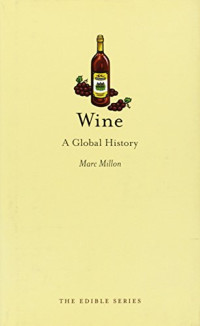
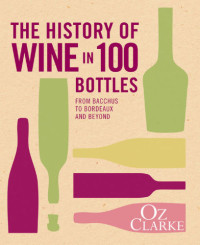
THE SOTHEBY’S WINE ENCYCLOPEDIA TOM STEVENSON LONDON, NEW YORK, MELBOURNE, MUNICH, DELHI CONTENTS Fourth edition (2005) DORLING KINDERSLEY ART EDITOR Sue Metcalfe-Megginson MANAGING ART EDITOR Marianne Markham DTP DESIGNER Louise Waller MAPS Encompass Graphics, Paul Eames, David Roberts PRODUCTION CONTROLLER Kevin Ward EDITORS Joanna Benwell, Bill Evans, Claire Nottage, Gary Werner MANAGING EDITOR Deirdre Headon DIGITAL CONTENT MANAGER Nina Blackett AMERICANIZATION Margaret Parrish INDEXER John Noble Produced for Dorling Kindersley by COOLING BROWN LTD. CREATIVE DIRECTOR Arthur Brown DESIGN Peter Cooling, Elaine Hewson, SENIOR EDITOR Fiona Wild COPY EDITOR Alyson Lacewing Tish Jones, Elly King Penguin Group (USA) Inc., 375 Hudson Street, New York, New York 10014, USA Penguin Group (Canada), 10 Alcorn Avenue, Toronto, Ontario, Canada M4V 3B2 (a division of Pearson Penguin Canada Inc.) Penguin Books Ltd., 80 Strand, London WC2R 0RL, England Penguin Ireland, 25 St Stephen’s Green, Dublin 2, Ireland (a division of Penguin Books Ltd.) Penguin Group (Australia), 250 Camberwell Road, Camberwell, Victoria 3124, Australia (a division of Pearson Australia Group Pty Ltd.) Penguin Books India Pvt Ltd., 11 Community Centre, Panchsheel Park, New Delhi - 110 017, India Penguin Group (NZ), Cnr Airborne and Rosedale Roads, Albany, Auckland, New Zealand (a division of Pearson New Zealand Ltd) Penguin Books (South Africa) (Pty) Ltd., 24 Sturdee Avenue, Rosebank, Johannesburg 2196, South Africa Fourth edition published 2005 by Dorling Kindersley Limited, 80 Strand, London WC2R 0RL First published in 1988 as Sotheby’s World Wine Encyclopedia Published in 1997 as The New Sotheby’s Wine Encyclopedia 6 8 10 9 7 5 Copyright © 1988, 1991, 1997, 2001, 2005 Dorling Kindersley Limited, London Text copyright © 1988, 1991, 1997, 2001, 2005 Tom Stevenson All rights reserved. No part of this publication may be reproduced, stored in a retrieval system, or transmitted in any form or by any means, electronic, mechanical, photocopying; , recording, or otherwise, without the prior written permission of the copyright owner. Introduction 7–47 Introduction 7 Using this book 8 The Taste of Wine 10 How to Assess a Wine 12 Terroir 14 Guide to Vineyard Soils 17 Viticulture 19 Annual Life cycle of the Vine 23 Vinification 25 The Choice of Oak 32 Grape Varieties 35 Glossary of Grape Varieties 36 Grape Variety Synonyms 43 Storing Wine 46 Serving Wine 47 The WINES of the world 48–51 A World of Wine 50 The WINES of FRANCE 52–259 France Introduction 54 Bordeaux 62 The Médoc 70 St.-Estèphe 81 Pauillac 84 St.-Julien 89 Margaux 92 Graves, Cérons, Sauternes, and Barsac 97 A CIP catalog record of this book is available from the British Library ISBN: 0-7566-1324-8 Color reproduction by Colorscan, Singapore Printed and bound by SMP Leefung, Hong Kong See our complete catalog at Château Gruaud-Larose, St-Julien, France The WINES of ITALY 260–299 Italy Introduction 262 Northwestern Italy 266 Northeastern Italy 275 West-Central Italy 282 East-Central Italy 289 Southern Italy and the Islands 292 The WINES of SPAIN 300–325 Spain Introduction 302 Rioja and Navarra 312 Penedés: Cava Country 318 Sherry Country 321 Conca d’Oro estate, Vulture, Basilicata, Italy The WINES of The Libournais and Fronsadais 108 St.-Émilion 111 Pomerol 120 The Fronsadais and St.-Émilion and Pomerol satellites 124 Bourg and Blaye 126 Entre-Deux-Mers 130 PORTUGAL 326–341 Burgundy 135 The WINES of The Chablis District 140 Côte de Nuits and Hautes-Côtes de Nuits 145 Côte de Beaune and Hautes-Côtes de Beaune 151 The Côte Chalonnaise 159 The Mâconnais 161 The Beaujolais 165 Champagne 169 Alsace 184 The Loire Valley 196 Pays Nantais 200 Anjou-Saumur 202 Touraine 207 Central Vineyards 211 Portugal Introduction 328 Port: The Douro Valley 334 Madeira 340 GERMANY, AUSTRIA, AND SWITZERLAND 342–395 Germany Introduction 344 The Ahr 354 The Mittelrhein 356 Mosel 358 The Nahe 362 The Rheingau 364 Rheinhessen 368 The Pfalz 371 The Hessische-Bergstrasse 374 Franken 376 The Rhône Valley 213 The Northern Rhône 215 The Southern Rhône 218 The Jura and Savoie 224 Southwestern France 228 Languedoc-Roussillon 235 Provence and Corsica 243 Vins de Pays 248 Rieschen Vineyard, Meersburg, Germany Württemberg 379 Baden 381 Saale-Unstrut and Sachsen 385 Austria 387 Switzerland 392 The WINES of NorthWestern Europe 396–409 The British Isles 398 Luxembourg 404 Other Winemaking Countries of Northwestern Europe 409 The WINES of Southeastern Europe 410–429 Bulgaria 412 Hungary 415 Romania 420 Slovakia and the Czech Republic 423 The Western Balkans 426 The Black and Caspian Seas 428 The WINES of the eastern Mediterranean 430–439 Greece 432 The Levant 437 The WINES of THE AFRICAS 440–459 South Africa 442 North Africa 456 Other Winemaking Countries of Africa 458 The WINES of THE AMERICAs 460–549 North America Introduction 462 Cabernet Sauvignon grapes, Chile California 469 Mendocino County 479 Sonoma County 481 Napa County 487 The Central Coast (North) 495 The Central Coast (South) 498 The Central Valley 502 Other Appellations of California 504 The Pacific Northwest 507 The Atlantic Northeast 517 Other Winemaking Areas of the United States 527 Canada 532 Mexico 538 South America Introduction 540 Chile and Argentina 543 The WINES of AUSTRALIA, NEW ZEALAND & ASIA 550–618 Australia Introduction 552 New South Wales 560 Victoria and Tasmania 567 South Australia 578 Western Australia 589 Queensland and Northern Territory 595 New Zealand 598 Asia 616 Spring mustard flowers and vines, Napa Valley, California Wine and Food 619 Taste Chart 623 Guide to Good Vintages 626 Troubleshooter’s Guide 628 Glossary 629 Index 641 Acknowledgments 664 INTRODUCTION GOOD NEWS AND BAD NEWS THE GOOD NEWS IS THE NUMBER OF top-performing wine producers throughout the world, which has swollen out of all proportion when compared with earlier editions of this encyclopedia. Despite deleting hundreds of previously recommended producers, there are now in excess of 6,000 wineries recommended over the following pages. I have never upgraded the star ratings of so many producers in any revision than I have for the California chapter in this edition. And, proportionately, the number of increased ratings for wineries in Australia and, my selfconfessed favorite, New Zealand, was not far behind. The bad news is the low number of top-performing organic wine producers. To be frank, I had no idea just how bad the situation was when I first decided to use O and B symbols to identify recommended organic and biodynamic wine producers, but the relative rarity of these symbols throughout the book rang alarm bells. It is one thing if someone gifted like Olivier Humbrecht of Domaine Zind-Humbrecht in Alsace or Lalou BizeLeroy of Domaine Leroy in Burgundy go organic or biodynamic. When great winemakers with exceptional terroirs “go green” they produce great organic or biodynamic wines. However, it is quite another matter when others less passionate about the quality of wine are organic. While they may well have a true passion for the environment, the majority of the world’s organic producers clearly have no idea how to make a superior quality wine. And considering that many of them have been churning out their green gunge for years, they obviously could not care less. Just as worrying are the organizations that certify organic and biodynamic production, because it seems as if they could not care less either. It is not good enough to certify the method of production alone. They should acknowledge the importance of quality by introducing some sort of superior award on the label. Either that or the likes of Humbrecht and Bize-Leroy should set up international schools of organic and biodynamic excellence. Both ideas would be nice. September 2005 7 8 INTRODUCTION USING THIS BOOK Where appropriate—in Bordeaux, for example—a listing of generic appellations provides an overview before the author deals with the more specific appellations. Various levels of information may be included in the Taste Guides, depending on the importance of a wine and/or its producer. Look for red, white, rosé, and sparkling tasting notes, with symbols denoting other information as detailed below right. When consulting the encylopedia for a comment on a particular wine, look up the wine producer in the index. If you find that the producer is not listed, then look up the wine’s appellation or style (by country or region). Each chapter of the Encyclopedia is arranged on a country-bycountry basis, within which each wine region is dealt with; any districts within regions are examined, as are any smaller winemaking areas in each district. Within each chapter, there are two basic types of page: general introductory text and taste guides. Introductory text has three regular features, “Label Language,” “Recent Vintages,” and “Factors Affecting Taste and Quality,” which may be given at either the national or regional level (see below). Taste guides are variously entitled: “The Appellations of...”; “The Wine Styles of...”; and “The Wine Producers of....” COUNTRY AND REGION INTRODUCTION PAGES The WINE S of FRANCE C H A P T E R I N T RO D U C T I O N Full-spread chapter openers give readers a brief introduction to the region in question and a taste of what is to come. FRENCH WINES ARE REGARDED AS THE BEST in the world, and a thread of this belief is even shared by France’s fiercest New-World competitors. Although the winemakers of Australia and California, for instance, no longer try to copy famous French wine styles, they still consider them benchmarks. The great French wine regions are a fortunate accident of geography, climate, and terroir. No other winemaking country in the world has such a wide range of cool climates; this factor has enabled France to produce the entire spectrum of classic wine styles – from the crisp sparkling wines of Champagne through the smooth reds of Burgundy to the rich sweet wines of Sauternes. Over many centuries of trial and error, the French have discovered that specific grapes are suited to certain soils and, through this, distinctive regional wine styles have evolved, so that every wine drinker knows what to expect from a bottle of Bordeaux, Burgundy, Champagne, or Rhône. This has been the key to success for French wines. FRANCE FRANCE FRANCE A2 A2 8 A34 A16 Oi se A26 A6 A20 e Loi r HAUTESALPES N75 Nimes ALPES-DEHAUTEPROVENCE VAUCLUSE NICE Duran ce A54 BOUCHESDU-RHÔNE Montpellier HÉRAULT ALPESMARITIMES Verdon A9 1912 GARD 1266 A51 A6 4 A3 5 N85 DRÔME 1702 rn Ta TARN TOULOUSE Rhi n SAVOIE GRENOBLE Valence 2086 ARDÈCHE AVEYRON GARONNE GERS A6 PYRÉNÉES- 4 HAUTEATLANTIQUES A61 GARONNE Tarbes Carcassonne HAUTES- Ga r o n n e AUDE 2504 PYRÉNÉES ARIÈGE N8 3 A31 A39 A43 A43 ISÈRE HAUTE-LOIRE LOZÈRE A75 VAR A8 MARSEILLE A57 Narbonne A9 • Merlot is the most planted grape variety of any colour in France. A48 St.-Etienne CANTAL LOT Adour Bayonne HAUTE-SAVOIE A42 TARN-ET- LANDES • 45 per cent of all French wine is processed by 840 cave coopératives. 1718 AIN Rhône Vienne N10 9 A8 260 Dordogne LOTETGARONNE Lac Léman A40 LYON A75 • 1.6 per cent of all French vineyards are farmed biologically. Mâcon CLERMONTDÔME FERRAND A89 Gar o A62 TERR.-DEBELFORT A38 DOUBS JURA SAÔNE-ET-LOIRE RHÔNE LOIRE DE- CORRÈZE DORDOGNE Perigueux BORDEAUX e s ub Do 224 PUY- Angoulême GIRONDE • 62 per cent of all French vineyards are machine harvested. A34 636 ALLIER r ente CHARENTE DIJON A38 902 e ôn Rh • There are over 147,000 vineyard owners in France, almost 110,000 of whom make and sell wine, of which more than 58,000 are producers of AOC wines. HAUTE-SAÔNE CÔTE-D'OR NIÈVRE r Allie Ch a Auxerre e Bourges CHER INDRE HAUTECREUSE VIENNE Limoges CHARENTEMARITIME ATLANTIC OCEAN A1 0 N137 A8 7 N137 DEUXSÈVRES A83 La Rochelle DID YOU KNOW? Lo ir 220 HAUT- RHIN Mulhouse CHER INDRE-ETLOIRE VIENNE Poitiers VOSGES selle Mo Tours N14 9 Country maps show a country’s main wine-producing regions, which are color-coded and cross-referenced, where appropriate, to regional maps. MOSELLESTRASBOURG RHIN HAUTEMARNE YONNE LOIRET ET- Angers MAINE-ETLOIRE 287 the vast majority simply feel so safe with their traditions that they don’t want to rock the boat. Initially there was good news and bad news. The good news being that the burgundians were for it, the bad being that the bordelais were not. However, the good news turned out to be bad, as evidenced by the supposedly pro-Renou Jean-François Delorme, who as president of the Bureau Interprofessionnel des Vins de Bourgogne (BIVB), commented “Of course, all of Burgundy’s AOCs would be super-AOCs”. If all Burgundy were of the quality of Romanée Conti, Leroy or Leflaive, no one would argue, but much too much is no better than vin ordinaire, while – as with every wine region - some wines can be almost undrinkable. So no, a pan-Burgundian application super-AOCs would not be very super at all. Being no fool, Renou allowed his historic proposal “slip out” in London, where he could count on its radical aims receiving widespread objective approval, before presenting the plan in detail to INAO’s 80-member National Committee. He later provided more details about his super-appellation, which he now called Appellation d’Origine Contrôléed’Excellence (AOCE), and threw another spanner in the traditionalist works by introducing the novel concept in the form of his proposed new Site et Terroir d’Excellence (STE) appellation. On past experience, the odds always were that a compromise would be sought. That the aims would become so fudged, and the regulations so watered-down that they will not simply be ineffective, but will probably be detrimental to the future of French wine. And that is precisely what has happened, but these new appellations and the reasons why they were rejected need exploring in more detail so that French wine lovers can at least know what Renou’s good intentions were. Readers will then be able to appreciate how the French blew this big time, and why the growers and government minister involved deserve to reap whatever ill winds they have sown. The BIVB was first to support Renou’s initiative, but Delorme’s daydreaming position was disowned by its members, who turned 1230 • Ugni Blanc is the widest planted white grape variety in France. Mediterranean Sea Perpignan PYRÉNÉESORIENTALES Bastia HAUTECORSE N1 98 3 N19 CORSE- Bordeaux See also p.59 The Rhône Valley See also p.211 Burgundy See also p.131 Jura and Savoie See also p.222 Champagne See also p.165, 169 Southwest France See also p.226 Alsace See also p.182 Languedoc-Rousillon See also p.233 The Loire Valley See also p.192 Provence and Corsica See also p.242 DU- Ajaccio Département boundary SUD Height above sea level (metres) 0 20 0 40 60 50 80 100 miles 100 150 km FRANCE 63 BORDEAUX BORDEAUX Pointe de Grave Médoc See also pp71, 81, 85, 89, 92 Graves See also p97 Pessac-Léognan See also p97 Cérons See also p97 Barsac See also p97 Sauternes See also p97 Blaye See also p126 Bourg See also p126 le Verdonsur-Mer SOULACSUR-MER Chenal d u Guâ 15 miles 20 25 km R E G I O NA L M A P D937 52 Berson N1 37 ST-ANDRÉDE-CUBZAC Targon A6 3 N1 0 Pedonsac Cérons n ne 72 D6 D3 Ste-Croixdu-Mont St-Macaire 60 Monsegur LA RÉOLE N113 e L è ge al d Can re E Ey N113 LANGON C i ron Sauternes A62 Hostens N10 re Hu D3 Villandraut St-Symphorien Bazas Préchac 119 D65 5 Grignols Belhade CASTELJALOUX D93 2 N13 4 Ste-Bazeille D932 D3 Etang de Cazaux et de Sanguinet Sore Captieux Cir o n B O R D E AU X , see also p55 PARIS Duras Dropt Landiras BELIN-BÉLIET Lugos Cadillac Loupiac Preignac A63 CAZAUX Sauveterrede-Guyenne Barsac Villagrains 106 Pellegrue 107 Langoiran N1 13 D670 D le Barp Ste-Foyla-Grande D936 Pujols Rauzan 0 D1 A6 2 Saucats SALLES Daignac Engra nne Ga r o CastresGironde 60 St-Magne Sanguinet 76 70 D6 D10 N Mios 16 Castillon-laBataillé D671 Cambes Leognan Marcheprime BIGANOS LE TEICH LA A66 TESTE CAP FERRET 61 50 N2 AUDENGE GUJANMESTRAS St-Emilion D67 0 Créon Cestas ANDERNOSLES-BAINS Bassin d'Arcahon LIBOURNE Branne D936 FarguesSt-Hilaire Villefranchede-Lonchat Pomerol Fronsac Arveyres Bordeaux D106 ARÈS ne Vayres N89 A89 St-Denis- 47 de-Pile D6 70 Dordo g St-Loubès A630 St-Jean-d'Illac Lège Dr on ne N89 Blanquefort D213 Martignas-sur-Jalle St-Seurinsur-l'Isle Isle Galgon AMBARÈS-ETLAGRAVE N125 ST-MÉDARDEN-JALLES le Temple COUTRAS Guîtres Ambès D1 Ste-Hélène 34 Saumos les-Eglisotteset-Chalaurès D6 74 Cézac BOURG Lacanau le Porge D910 Cavignac Macau Lac de Lacanau la RocheChalais N10 St-Savin Pugnac Moulis-en-Médoc Margaux Castelnaude-Médoc Brach D730 L a r it Carcans Saugon BLAYE uil Br e du CussacFort-Médoc ListracMédoc le Jal 72 36.8 10.0 11.0 2.4 3.1 4.2 0.8 2.7 0.7 1.0 1.1 14.4 8.3 3.4 15 A10 St-JulienBeychevelle St-LaurentMédoc O SURFACE AREA Expressed as a percentage of Bordeaux vineyards 10 10 Reignac Etauliers R DISTRICTS 5 5 Livenne 23 Hourtin Lac d'Hourtin Carcans VOLUME V. REPUTATION Bordeaux (red) Bordeaux Supérieur (red) Médoc (red, non cru classé) Médoc (red, cru classé) Graves (red) Saint-Émilion (red) Saint-Émilion (red, grand cru classé) Saint-Émilion satellites (red) Pomerol (red) Lalande de Pomerol (red) Fronsac (red) Various côtes (red) Dry white Sweet white Height above sea level (metres) 0 D73 0 N137 27 le Contaut ARCACHON Very few Bordeaux wines are produced from great vineyards. As the table below illustrates, the famous appellations represent a relatively small amount of the bordelais vignoble, and the classified growths a minuscule proportion of that. Yet it could be argued that the reputation of Bordeaux has been built upon a fraction of its cru classé or grand cru classé – the best performers. Bordeaux is a great wine region, but not all Bordeaux is great wine. Département boundary Delimited AOC region of Bordeaux 0 2 St-Estèphe THE MODERN BORDEAUX WINE TRADE It was perhaps inevitable that the historically powerful and familyowned négociant-éleveur firms would eventually become a spent force. They lacked the resources required to adequately finance the huge increase in demand for Bordeaux in the 1960s, and those that did not founder during the oil crisis of the early to mid-1970s fell prey to the economic depressions of the following two decades. As proud old firms were either taken over or went bankrupt, so the power shifted from the négociants to the châteaux, and in order to cope with a boom in world markets, many Bordeaux properties expanded their vineyards or added large, shiny new fermentation facilities. Many of these projects were financed with bank loans when interest rates were low. When sales slumped The Libournais District See also pp108, 111, 120 St-Émilion See also p111 Pomerol See also p120 Entre-Deux-Mers See also p130 MONTENDRE St-Cierssur-Gironde St-Seurin-deCadourne LesparreMédoc I THE CHÂTEAU SYSTEM AND MERCHANT POWER Prior to the concept of château wine estates, the land was worked on a crop-sharing basis. This feudal system slowly changed from the late 17th century onwards. As the bordelais brokers developed the habit of recording and classifying wines according to their cru, or growth (that is to say their geographical origin), and the prices they fetched, the reputations of individual properties became established. The 19th century saw the rise of the négociant, or merchant, in Bordeaux. Many négociants were of English origin, and some Mirambeau St-ChristolyMédoc VendaysMontalivet D6 OVERVIEW The Bordeaux appellation and the Gironde département are geographically one and the same. Moreover, the Gironde is the largest département in France, and Bordeaux is the largest source of quality wines in the world. There are more than 22,000 vineyard proprietors working in excess of 120,000 hectares (280,000 acres), producing 6.4 million hectolitres (over 71 million cases) of Bordeaux wine (85 per cent red, 3 per cent rosé, and 12 per cent white) under 57 different appellations every year. Of these 22,000 properties, no fewer than 10,000 are châteaux and domaines producing wine. Of these 10,000 wine-producing properties, some 6,000 make and market wine under their own name (75 per cent of total production), while the remaining 4,000 wine-producing properties are members of 53 cooperative wineries in Bordeaux (representing 25 per cent of production, a little of which is sold under the producing property name). St-Viviende-Médoc G reputation as the last decade of the 20th century turned out to be. Rain-drenched harvests towards the end of the 1990s challenged Bordeaux’s claim to be the ultimate viticultural paradise, while the depressingly poor quality of its generic wines attracted almost as much bad publicity as the grossly inflated prices of modest vintages from the top châteaux. The weather might have improved in the first few years of the 21st century, but the quality of generic Bordeaux has remained abysmal, prices continue to rise almost in direct relation to the drop in sales – and then the unimaginable happened: the renowned US wine critic Robert Parker failed to appear for the primeur tastings in March 2003. But all is not lost – Christian Delpeuch, the new head of the Conseil Interprofessionel des Vins de Bordeaux (CIVB), has mooted the possibility of declassifying some of the weaker Bordeaux wines into a wider vin de pays, which could then be bolstered by stronger wines from outside the region, but traditional to the southwest, such as the deep, dark Tannat. Delpeuch is the managing director of Ginestet, the region’s biggest trader, and seems to have a good understanding of the more commercial end of Bordeaux’s business. He has suggested the creation of a Vins de Pays d’Aquitaine category for the Bordeaux region, under which varietal wines could be marketed. Far from detracting from the classic wines of Bordeaux, this would in fact improve their quality through stricter selection. And at the very top end of the market, the bordelais can once again sleep easy in their beds, as Robert Parker returned for the primeur tastings in 2004. G Talais 40 Montalivetles-Bains D1 06 THE NEW MILLENNIUM appears to be just as taxing for Bordeaux’s firms were established by Scottish, Irish, Dutch, or German businessmen. The best château wines were not consumed by the French themselves; they were the preserve of other northern European countries. Thus foreign merchants had an obvious advantage over their French counterparts. Yearly, in spring, these négociants took delivery C H Â T E AU PA L M E R of young wines in cask from the This majestic turreted château is various châteaux and matured one of the finest in the Médoc. them in their cellars prior to shipping. They were therefore responsible for their élevage, or upbringing, and came to be known as négociants-éleveurs, eventually becoming the middlemen found in every aspect of wine trading. Many foreign buyers found it more convenient to deal through a négociant than directly with the wine producer, and often they had no alternative, since a number of châteaux were owned by, or were exclusive to, certain négociants. e If a country has major winemaking regions, each is given a full introduction. Bordeaux is an area in an almost-perfect viticultural situation on the west coast of France and benefits from the ultimate marketing tool – a château-based classification system that was established 150 years ago. nd iro MAIN WINE REGION l'Is le 62 LOIR- A11 NANTES VENDÉE AUBE A5 A5 Orléans 148 Seine A6 LOIR Le Mans LOIREATLANTIQUE C H Â T E AU F I G E AC Without doubt in a class of its own within Class B of Premiers Grands Crus Classés, Château Figeac has long fought to be classified with Ausone and Cheval SEINE-ETMARNE ESSONNE ET- SARTHE A11 BAS- N59 A81 102 ne MAYENNE V il a i n e N1 65 MEURTHE- NANCY ETr Ma EURE- A11 ILLE-ETVILAINE RENNES MORBIHAN Metz MOSELLE MEUSE Sa ôn CÔTES D’ARMOR Paris A4 1 A84 A13 YVELINES ORNE FINISTÈRE C O U N T RY M A P A4 MARNE A71 Fortified wine Just over 0.1% of total French wine production – 20% exported, 80% consumed within France VALD'OISE N176 391 ARDENNES AISNE Reims EURE CALVADOS OISE N77 Sparkling wine Just over 5% of total French wine production – 42% exported, 58% consumed within France A13 A77 Rosé wine Almost 6% of total French wine production – 30% exported, 70% consumed within France ROUEN Caen e nn Vin de Table Just over 10% of total French wine production – 16% exported, 84% consumed within France White wine Just over 18% of total French wine production – 55% exported, 45% consumed within France A29 A1 N13 MANCHE Brest N51 A29 SEINE-MARITIME Le Havre 47 N1 Vin de Pays Almost 31% of total French wine production – 10% exported, 90% consumed within France NORD SOMME A10 A wealth of statistical information is given in various charts, tables, and information boxes. Vin Délimité de Qualité Supérieure (VDQS) Less than 1% of total French wine production – 17% exported, 83% consumed within France BY TYPE Red wine Just over 55% of total French wine production – 30% exported, 70% consumed within France LILLE CALAIS 3 A2 Cherbourg 38 N1 TA B L E S , C H A RT S , A N D B O X E S FRENCH WINE AT A GLANCE BY CLASSIFICAT I O N Appellation d’Origine Contrôlée (AOC or AC) Exactly 58% of total French wine production – 25% exported, 75% consumed within France PASDE- A28 This gives a broad picture of the country in question. Much of the statistical and technical data is compartmentalized into boxes to avoid interrupting the flow of text while enabling readers seeking such information to zero-in on it quickly. A16 A2 6 Boulogne T HE M OON R ISING OVER C HÂTEAU L ATOUR The magnificent tower of Château Latour is b th d i li ht kiEnglish th j t f Channel Dieppe N158 C O U N T RY I N T RO D U C T I O N Calais 5 A2 The success of French wine has been built on deservedly famous regions that have been enshrined by Appellation d’Origine Contrôlée (AOC) laws, but the unwillingness to police this system in any meaningful sense has gradually debased historic reputations at the precise point in history when New World producers have been eager to establish their own wines. FIFTEEN YEARS AFTER it became blindingly obvious, the French establishment woke up to the fact that AOC was not AOK, and started to think the unthinkable: change. When René Renou, the director of the Institut National des Vins d’Origine or INAO (i.e. he was the man in charge of running the entire French appellation system), proposed a super-appellation that would be bestowed on wines of “demonstrably superior quality”, he shook the very foundations of French culture - tradition. This country produces both the best and the worst wines in the world because of its fixation with tradition, but whereas the French are always willing to preserve the best traditions, they are loath to banish the worst. Even when it is staring them in the face. In 1995 Michel Bettane, one of France’s top wine writers, was quoted as saying “Today, appellation contrôlée guarantees neither quality nor authenticity”. At the time, Alain Berger was the director of INAO at the time, and when pressured he caused uproar by confessing that “One can find on the market scandalously poor products with the appellation contrôlée halo”. But was anything done? Of course not. Thus the fact that Renou not only confirmed the situation, but also proposed a solution, was so rare that I suspect it must be unique. However, a fundamental shake-up to the system that gave birth to wine regimes throughout Europe threatened the moral authority of French wine, thus Renou’s proposals have been met with hostility in some quarters, while in others they are viewed as absolutely necessary, thus he has been dubbed ‘Superman’. Those who support Renou are, essentially, a quality-conscious minority, while those who oppose include the worst of the worst, although 55 FRANCE The coloured areas on this map identify the ten main wine-producing regions of France, where the areas of Appellation d’Origine Contrôlée, which cover 490,000 hectares (1.2 million acres), are concentrated. However, the country has almost one million hectares of vineyards in total, and many good, everyday-drinking wines are made in other parts of the country. See also Vin de Pays maps pp.246, 247. A20 54 Sandwiched between the brandy regions of Cognac to the north and Armagnac to the south, the Gironde département, which constitutes the AOC area of Bordeaux, consists of the former province of Guyenne and a part of Gascony called Bazedais. Luxey Regional maps show a region’s main winemaking areas, which are color-coded and cross-referenced, where appropriate, to district maps. 9 USING THIS BOOK DISTRICTS AND TASTE GUIDES B A R R E L - M A K I N G AT L A F I T E - RO T H S C H I L D SOULACSUR-MER 7 D11 MESCHERSSUR-GIRONDE D6 St-Estèphe See also p81 D7 30 Mortagnesur-Gironde D2 Listrac-Médoc Moulis Valeyrac Vensac Queyrac Bégadan D102 VendaysMontalivet 3 3E D10 LESPARREMÉDOC 25 St-Germaind'Esteuil D3 02 D2 6 miles 6 8 10 km Livenn D101E D205 Ch. Lynch Moussas Etauliers 3 D25 e Reignac PAUILLAC Ch. Lynch-Bages Ile Bouchard Ch. Batailley Ch. Pichon-Longueville 30 Ch.Talbot St-Julien-Beychevelle Ch. Ch. Ducru-Beaucaillou D206 Lagrange St-LaurentCh. Beychevelle Ch. Médoc Gruaud Ile Larose Nouvelle Ch. 28 la Tour Ch. Camensac BLAYE Carnet Cussac18 48 D9 37 Hourtin Lac d' HourtinCarcans Fort-Médoc 27 ListracMédoc Maubuisson D20 7 Etang de Cousseau Brach 55 LacanauOcéan 33 Ch. du Tertre 2 D2 Salaunes N2 15 St-Aubinde-Médoc 43 40 Ambès D1 0 75 gn D5 E Saumos D23 BOURG Macau B O LudonRDEAUX - THE MÉDOC Médoc D113 Lac de Lacanau Ch. Giscours 21 47 Pugnac D or d o THE APPELLATIONS OF e AMBARÈS- THE WINEETPRODUCERS OF Parempuyre LAGRAVE THE MÉDOC BLANQUEFORT BASSENS Jalle 42 D107 ST-MÉDARDEN-JALLES D209 THE MÉDOC 92 Ch. Marsac40 Séguineau D6 69 Ch. Labégorce Ile Ch. Moulis-en-Médoc Paveil-de-Luze 3 Cazeau Ch. Margaux Margaux Avensan Ch. d'Issan Ch. Palmer Ch. Prieuré-Lichine Ch. Cantenac-Brown Castelnaude-Medoc 33 Ch. Angludet Lacanau FRANCE N1 37 Berson Ile Verte 04 D1 Carcans de ron Gi 5 5 18 11 HAUT-MÉDOC AOC 21 This 60 AOC encompasses the Médoc’s four finest 2 Ch. le Boscq Ch. Calon-Ségur A10 TOTAL 4 4 St-Seurinde-Cadourne D1 3 1 12 0 2 18 2 D251 1 1 1 4 3 10 2 0 St-Estèphe Ch. de Pez Ch. Phélan-Ségur Ch. Pomys Ch. Meyney Vertheuil Ch. Montrose Ch. Andon-Blanquet Ch. Marbuzet Ch. Lafon-Rochet Ch. Cos d'Estournel Cissac-Médoc 11 Ch. Cos Labory Ch. Duhart-Milon- Ch. Lafite Rothschild Ch. Mouton-Rothschild Ile de Patiras Ch. Pontet-Canet 22 le Contaut 0 St-Yzansde-Médoc 17 8 Height above sea level (metres) St-ChristolyMédoc N215 GROWTHS 4TH 5TH Haut-Médoc 3 MONTALIVETLES-BAINS D104 1 1 0 2 10 14 Margaux See also p92 D14 5 N215 3RD 0 2 2 5 5 14 St-Julien See also p89 ST-VIVIENDE-MEDOC 12 D204 2ND 0 0 3 0 1 4 Pauillac See also p85 59 2 D2 D3 1ST Médoc D1 45 Gir on de Ste-Hélène Haut-Médoc St-Estèphe Pauillac St-Julien Margaux TOTAL Château Intensive vine growing zone 52 3 55 DISTRIBUTION OF MÉDOC CRUS CLASSÉS THROUGHOUT THE APPELLATIONS 74 APPELLATION 8% of Médoc AOCs, 100% of crus classés Gémozac D2 5 TALAIS 49 The four famous communes of Margaux, St-Julien, Pauillac, and St-Estèphe, plus the two lesser-known but developing communes of Listrac and Moulis, are to be found in a region within the Médoc known as the Haut-Médoc, where the wines are fine, firm, and fleshy. The Haut-Médoc begins at the southern outskirts of the city of Blanquefort, along the northern reaches of the Graves district where the wines are fairly neutral. The greatest wines of the HautMédoc are found in the area beginning at Ludon with Château la Lagune – the first cru classé encountered moving north from Blanquefort. Fine crus bourgeois are to be found in this area as well. The wines at Margaux are soft and velvety and full of charm, although they are very much vins de garde and will improve well with age. The wines of St-Julien are elegant with a very pure flavour. They have the delicate touch of Margaux, yet lean closer to Pauillac in body. The wines of Pauillac are powerful, often having a rich blackcurrant flavour with hints of cedar and tobacco. (6,931) D73 2 le-Verdonsur-Mer The best soils for vine-growing also happen to be the most suitable for gravel quarrying. After the war, in the absence of any legislation, gravel quarrying started in abandoned vineyards. Once the gravel was gone, the opportunity to reclaim the area as a vineyard was lost. There is plenty of gravel in the Gironde estuary itself, but it is more profitable to take it from an open pit. Quarrying companies will continue to plunder the Médoc’s finite resources until the government agrees to protect them, but past administrations have shown little interest. 2,805 These maps show color-coded winemaking areas, and, like some regional maps, also show intensive wine-producing zones and indicate the location of the best wine producers. A10 Wines are aged in new oak at Château Lafite-Rothschild, although for a shorter length of time than in the past. The barrels are made with great care in a timehonoured, traditional manner. 15,993 (39,520) (558) (2,081) (1,552) (2,110) No crus classés 6% of AOC, 9% of crus classés No crus classés No crus classés 18% of AOC, 8% of crus classés 70% of AOC, 30% of crus classés 68% of AOC, 22% of crus classés 61% of AOC, 31% of crus classés (630) D2 55 Primary varieties: Cabernet Sauvignon, Cabernet Franc, Merlot Secondary varieties: Carmenère, Petit Verdot, Malbec TOTAL Pointe de Grave THE FIGHT FOR GRAVEL 255 – – 226 842 628 854 N137 G GRAPE VARIETIES 5,358 (13,240) 4,590 (11,342) 664 (1,641) 607 (1,500) 1,254 (3,099) 1,209 (2,988) 909 (2,246) 1,402 (3,464) D1 02 E and gentle slopes are characteristic of the Médoc. The best vineyards can “see the river” and virtually all areas of the Haut-Médoc gradually slope from the watershed to the Gironde. Marshy areas, where vines cannot be grown, punctuate most communes. Médoc Haut-Médoc Listrac Moulis St-Estèphe Pauillac St-Julien Margaux CRUS CLASSÉS REPRESENTS D4 E Undulating hillsides with knolls ASPECT VITICULTURE AND J VINIFICATION Only red wines can use the Médoc appellation. Mechanical harvesting is commonplace and all grapes are destalked prior to fermentation in tanks, or in vats increasingly made of stainless steel. Skin contact lasts for one to two weeks, although some châteaux have reverted to the once standard four weeks. D102E either side of the Médoc – the Atlantic and the Gironde – act as a heat-regulator and help provide a microclimate ideal for viticulture. The Gulf Stream generally gives the Médoc mild winters, warm summers, and long, sunny autumns. The district is protected from westerly and northwesterly winds by the continuous coastal strip of pine forest that runs roughly parallel to the Médoc. TOTAL HA (ACRES) IN HA (ACRES) D18 THE MÉDOC STYLE: VARIATIONS ON A THEME CLIMATE F Two large masses of water different subsoils in the Médoc. Its topsoils are typically outcrops of gravel, consisting of sand mixed with siliceous gravel of varying particle size. Subsoils may contain gravel and reach a depth of several metres, or may consist of sand, often rich in humus, and some limestone and clay. APPELLATION D101 – “between the waters” – referring to the Gironde estuary and the Atlantic Ocean. It is a long, thin strip of prized vines, extending northwest from the city limits of Bordeaux to the Pointe de Grave. At its centre is the classic area of Bordeaux, where the vast majority of the most famous châteaux are located, and yet this was the last major district of Bordeaux to be cultivated. While winemaking in the Libournais district of St-Émilion began as early as the Roman occupation, it was another thousand years before scattered plots of vines spread along the Médoc. Across the large, brown expanse of water called the Gironde, the Romans viewed Bourg and considered its hilly area far more suitable for growing vines. At that time the marshland of the Médoc was difficult to cross and impossible to cultivate. Today, the Médoc is the envy of winemakers the world over and Bourg is merely a source of inexpensive, if good-value, basic Bordeaux. of the Gironde estuary, stretching northwest from Bordeaux in the south to Soulac in the north. al du Guâ Chen THE MÉDOC TAKES its name from the Latin phrase medio aquae FACTORS AFFECTING TASTE AND QUALITY SOIL LOCATION D Similar H The topsoils lie over Médoc lies on the left bank DISTRICT MAP PROPORTION OF AOC AREA UNDER VINE REPRESENTED BY CRUS CLASSÉS E D3 In the introductory text for countries, regions, or districts, a tinted panel gives a quick-reference guide to the fundamental conditions that determine the quality and style of the wines produced in each area. The style of wine alters more radically over short distances in the Médoc than in any other French red wine district. The wines are mild and unexceptional immediately northwest of Bordeaux, but from Ludon onwards they become progressively more characterful, acquire finesse, and – after Margaux – gain considerable body. Beyond St-Estèphe, the firmness of body of the wines eventually turns to coarseness, and their finesse fades. 71 BORDEAUX - THE MÉDOC These are wines of great finesse, and Pauillac can be considered the greatest appellation of the Médoc. St-Estèphe includes many minor growths of rustic charm and a few classic wines, and technology is changing the robustness of its spicy wines to richness. Beyond St-Estèphe lies the commune of St-Seurin-de-Cadourne, whose wines are entitled to use the Haut-Médoc appellation, after which the appellation becomes simply AOC Médoc. This area, formerly known as the Bas-Médoc, has a lesser reputation than the Haut-Médoc. However, many exceptional wines are made here: the triangle formed by St-Yzans, Lesparre, and Valeyrac contains such outstanding minor growths as Loudenne, Potensac, la Cardonne, Blaignan, les Ormes-Sorbet, la Tour-St-Bonnet, la Tour-de-By, and Patache d’Aux. In general the style is more simplistic than in the Haut-Médoc. 5 N21 FAC T O R S A F F E C T I N G TA S T E A N D Q U A L I T Y FRANCE THE MÉDOC D1 04 E In France and California, each region’s individual wineproducing districts are examined separately. 70 D3 WINE DISTRICTS brings power and style together to produce CHÂTEAU CHÂTEAU BELwines of incomparable finesse for their size. T H E M É D O C , see also p63 D’AGASSAC AIR LAGRAVE Gironde estuary and the Atlantic Ocean, stretches northwards from the gCabernet Sauvignon, Cabernet Franc, The Médoc, a narrow strip of land between AOCthe Haut-Médoc AOC Moulis Cru Bourgeois The climateSupérieur is Bordeaux’s mildest, moderated by bV both the estuary and the ocean. Carmenère, Merlot, Malbec, Petit Verdotcity of Bordeaux to the Pointe de Grave. Cru Bourgeois cbV This growth was classified cru k9–25 years (crus classés); bourgeois in 1932, but not included 5–12 years (others) in the syndicat’s 1978 list. The wine is matured in wood for 18 to 20 ST-ESTÈPHE AOC months, with 70 per cent new oak. RED These vividly coloured wines have a fine bouquet and firm tannic structure. MÉDOC AOC gCabernet Sauvignon 60%, Technically, this appellation covers the entire Merlot 35%, Petit Verdot 5% Médoc, but most wines actually come from k8–20 years north of the Haut-Médoc in the area which was Second wine: Château Peyvigneau formerly called the Bas-Médoc. Its vineyards This is one of the best unclassified have undergone a rapid and extensive wines in the Haut-Médoc. The wine CHÂTEAU BELGRAVE expansion since the mid-1970s. is matured in wood for 15 months, AOC Haut-Médoc 5ème Cru Classé RED The best of these dry, medium-bodied with one-third new oak. cbV wines are similar in style to good Haut-Médocs, RED Dark-coloured, plummy wine, Situated on a good gravel bank although the style is less sophisticated. with a lot of soft, ripe fruit. behind Château Lagrange, the wine, LISTRAC-MÉDOC AOC gCabernet Sauvignon, Cabernet Franc, gCabernet Sauvignon 47%, which is matured in wood for 24 Significant funds have been invested in a Carmenère, Merlot, Malbec, Petit Verdot Merlot 50%, Petit Verdot 3% months with up to 50 per cent new number of high-performance châteaux in The potential of St-Estèphe is exemplified by k4–8 years oak, has improved consistently k4–10 years this commune, although its heavy clay soil Cos d’Estournel, which is one of the best throughout the 1990s. Second wine: Château Pomièsdoes not have anything like as much potential months, with 30 per cent new oak. deuxièmes crus in the Médoc, but the strength MOULIS AOC RED A good balance of Agassac as the gravel ridges found in the most famous of this appellation lies in its range of crus RED These wines are very stylish, blackcurrant fruit and ripe acidity, OR MOULIS-ENMédoc appellations. with lush Cabernet fruit backed up bourgeois. The area under vine is slightly less with much more supple tannin MÉDOC AOC by the creamy richness of new oak. RED These dry, medium- to full-bodied than that of Margaux, which has the largest structure than used to be the case, CHÂTEAU One of the two communal appellations located wines have the fruit and finesse of St-Julien area, but St-Estèphe has far more unclassified gCabernet Sauvignon 62%, and vanilla overtones of new oak. D’AURILHAC on the Atlantic side of the Médoc, Moulis-encombined with the firmness of St-Estèphe. châteaux, and even the best wines are Merlot 36%, Cabernet Franc gCabernet Sauvignon 55%, AOC Haut-Médoc Cru Bourgeois Médoc is smaller and potentially more The most successful wines tend to have a wonderfully cheap. and Petit Verdot 2% Merlot 32%, Cabernet Franc c interesting than its neighbour Listrac. Like large proportion of Merlot, which enjoys RED If Pauillac is the stallion of the four k6–12 years 12%, Petit Verdot 1% A relative newcomer that has Listrac, it has no cru classé châteaux, the Haut-Médoc’s clay soil. famous appellations, St-Estèphe must be the Second wine: Château Le Fournas k8–16 years quickly developed a cult following. despite adjoining Margaux, the appellation gCabernet Sauvignon, Cabernet Franc, shire-horse. These dry, full-bodied wines are big Bernadotte The grapes are machine harvested, Second wine: Diane de Belgrave that has the highest number of such properties Carmenère, Merlot, Malbec, Petit Verdot and strong, yet not without dignity. St-Estèphe and the wine is matured in wood in the Médoc. demands affection and, with the rich fruit of a k5–10 years for 12 months, with 35 per cent CHÂTEAU CHÂTEAU BEL-ORMERED These dry, medium-bodied, sometimes sunny year, deserves it. These most enjoyable, new oak. BISTON-BRILLETTE TRONQUOY-DE-LALANDE full-bodied, wines have more power than those sweet-spice and cedary wines can have lots of MARGAUX AOC RED A flashy, huge, dark, and AOC Moulis AOC Haut-Médoc Cru Bourgeois of Margaux, but far less finesse. honest, chunky fruit. Cos d’Estournel is the dense wine with masses of fruit to Cru Bourgeois Supérieur c thoroughbred of the commune. gCabernet Sauvignon, Cabernet Franc, balance the ripe tannins and cbV This property has a confusingly Carmenère, Merlot, Malbec, Petit Verdot gCabernet Sauvignon, Cabernet Franc, extrovert oak. This top-quality Moulis property similar name to Château TronquoyCarmenère, Merlot, Malbec, Petit Verdot k5–12 years gCabernet Sauvignon 56%, ages its wines in wood for 12 to Lalande, St-Estèphe. Steady k8–25 years (crus classés); Merlot 38%, Cabernet Franc 15 months, with up to 35 per cent improvement since the mid-1990s PAUILLAC AOC 5–12 years (others) 3%, Petit Verdot 3% new oak. has turned the once four-square character of these wines into a more k5–15 years RED Wines that are very rich in classically structured style. This ST-JULIEN AOC colour and fruit with a full, spicySecond wine: Château La Fagotte wine is matured in wood for 12 to cassis character and a supple tannin St-Julien is the smallest of the four famous 14 months, with 10 per cent new structure. appellations and the most intensively oak. CHÂTEAU gCabernet Sauvignon 55%, cultivated, with almost 50 per cent of the RED These are firm, fruity, BEAUMONT Merlot 40%, Malbec 2%, Petit commune under vine. There are no first classically structured wines. AOC Haut-Médoc Verdot 3% growths, but there are as many as five The best Margaux are potentially the greatest gCabernet Sauvignon 35%, Cru Bourgeois Supérieur seconds, and the standard and consistency k5–15 years wines in the whole of Bordeaux, but this is an bV Merlot 605 55%, Cabernet Franc of style is very high. This AOC overlaps NEW ZEALAND NEW ZEALAND Second wine: Château Biston appellation that covers five communes 10% part of the commune of Pauillac, and, A large property that consistently Other wine: Château Graveyron encompassing a great diversity of soil and some produces wines of good quality. historically, châteaux Latour and Pichonk7–15 years of its wines not unnaturally have a tendency to This wine is matured in wood for Longueville-Comtesse-de-Lalande could is judged more useful for its ability to add some THE WINE STYLES OF RIESLING disappoint. Margaux benefits enormously from CHÂTEAU BOUQUEYRAN 12 months, with 30 per cent as easily St-Julien AOC as CHÂTEAU BERNADOTTE mid-palate smoothness to a classic red have wine become Truly having a namesake château, which is unique in dry Riesling is still a minority product in new oak. AOC Moulis Pauillacand AOC. AOC Haut-Médoc blends. The pure Malbecs of Fromm Mills Bordeaux, and the fact that this property sets New Zealand, where most renditions of this bV RED These are aromatically cbV are dry, medium-bodied, are exceptions. Hawke’s RED Bay isThese the best This commune vies withReef Margaux as the most the most extraordinarily high standards has variety have some residual sugar, even if the attractive wines with elegant fruit A big improvement in quality and full-bodied, wines that have Consistently performing above its and doubt Gimblett best sub-district. famous appellation, butregion, is without the Road thesometimes result is not a distinctive sweetness. New done no harm to the reputation and price of and supple tannin. value since this 13-hectare (32-acre) purity of style, varietal flavour, and can be class, this château is situated on Bordeaux increased from 350 hectares (865 acres) in thethese wines Australian Chardonnay-Sémillon is not amost rock solid and consistent k2–8 of years Zealand Riesling seems to be generally crisper gCabernet Sauvignon 60%, generally. The phenomenalblend success property was leased by Philippe fine, gravelly ground that once had long-lived. Well balanced and elegant, these Latour, Lafite, late 1980s to more than 3,700 hectares (9,143 of Château common combination in New Zealand, where AOCs, while its premiersIcrus than its Australian counterpart, with more Margaux has, however, unfairly EskofValley (The Terraces) • Fromm Porcheron of nearby Château Rose Merlot 35%, Cabernet Franc the right to the Pauillac appellation wines fall somewhere between the lushness important. acres) today. It is generally less predictable, raised expectations Chardonnay does not lesser-quality need to be crisped up, and Mouton make it the most citrous finesse. It does not have the same of many (Reserve) • Mills Reef (Elspeth) Saint-Croix. Wines are matured in and formed part of a cru classé. The 2%, Petit Verdot 3% that is typical of Margaux and the firmer more expressive, and capable of a slower, more butinChardonnay and Chenin Blanc simplistic lime fruit, and is not inclined to go châteaux the area, but those critics whohave proved RED Dark and virtually opaque, great Pauillac wood for 18 months with up to 50 quality has improved since the structure of Pauillac. petrolly very quickly either. In structure and k4–8 years classic rate of maturation than its Australian widely to be surprisingly bed-mates. accuse proprietorsgood of sacrificing quality per cent new oak. La Fleur de is a dry, powerfully constructed wine, typically property was purchased in 1996 by gCabernet Sauvignon, Cabernet equivalent. This is due not only to cooler Second wine: Château style it leansFranc, closer to northern Europe, Bouqueyran is a superior cuvée. for quantity could not be further from the truth. k1–3 years redolent of blackcurrants and new oak. ItMERLOT might the redoubtable Mme Lencquesaing, Malbec, Petit climatic conditions, but also to hand-picking, There are individual châteaux that overproduce d’Arvigny not asVerdot close as the Riesling produced always RED Lovely deep-coloured, deepwho also owns Pichon-Longuevilleand Blended Carmenère, Merlot,although I Pegasus Bay (Sauvignon-Sémillon) • Villa be unapproachable when young, but isPure whole-bunch pressing, a wider use of natural and therefore fail to achieve their full potential, in Michigan or the Finger Lakes of the USA. Although it does Other wine: Tours de flavoured wines of not Comtesse-de-Lalande. This wine is Maria (Private Bin Chardonnay-Chenin) rich with fruit when mature. Ten years ago there was twicek6–20 as muchyears (crus classés); (local) yeast fermentation, and less obvious oak, 5–12Zealand years (others)k1–5 years but excessive volume is not typically the inconsiderable style and finesse. not have the grace of great Margaux, Pauillac now matured in wood for 12 Beaumont Cabernet Sauvignon growing in New although some producers can spoil the natural I Kim Crawford • Dry River (Craighall) as there was Merlot. Now the position has CHENIN BLANC elegance of these wines by various • Felton Road • Framingham • Grove Mill reversed, even though the area planted with New Zealanders should be able to show South permutations of malolactic fermentation and • Hunter’s (Stoneburn) • Montana Cabernet Sauvignon has increased eight-
 Amazon
Amazon  Barnes & Noble
Barnes & Noble  Bookshop.org
Bookshop.org  转换文件
转换文件 更多搜索结果
更多搜索结果 其他特权
其他特权 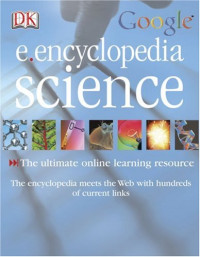

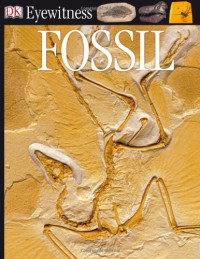
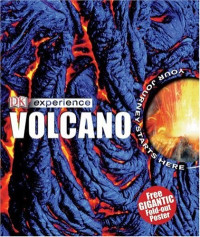

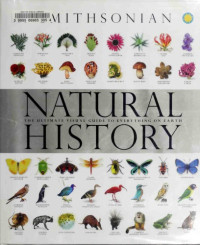
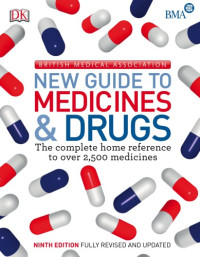
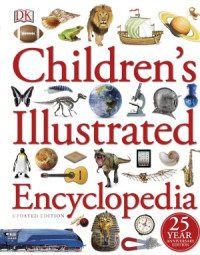
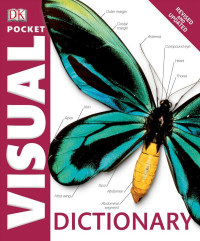


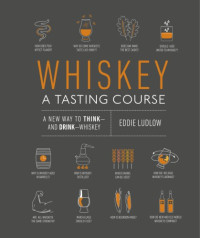
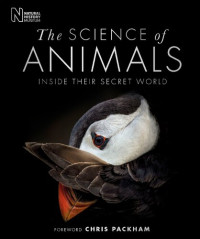
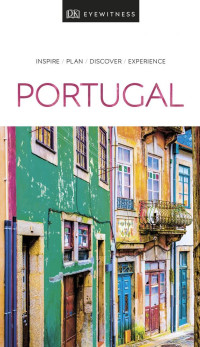
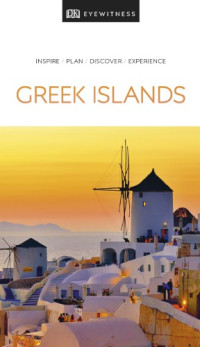
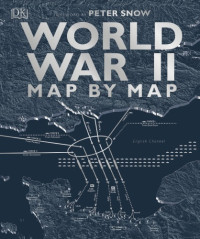
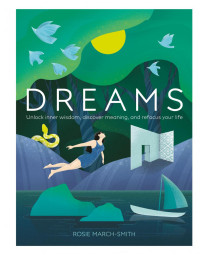
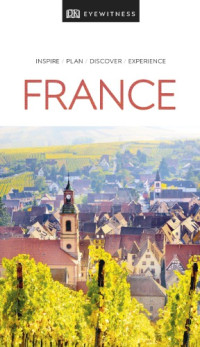
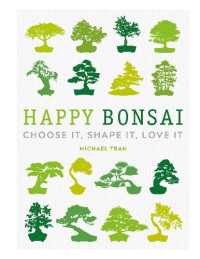

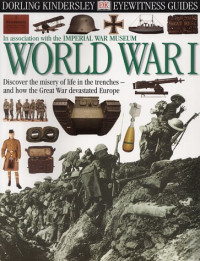
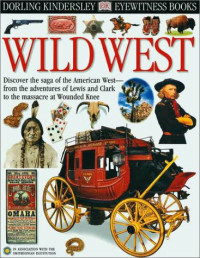
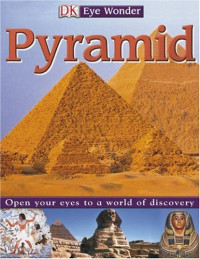
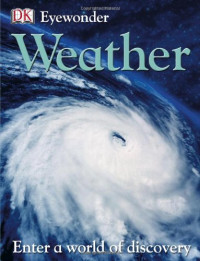
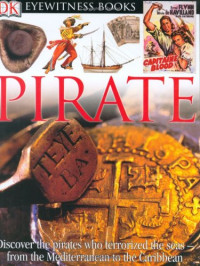
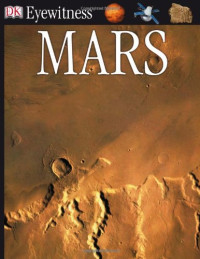
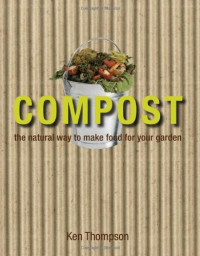
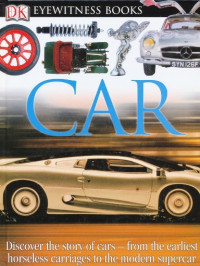
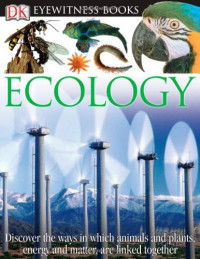
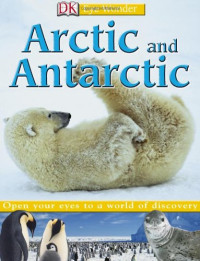
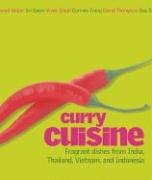
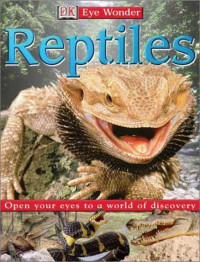
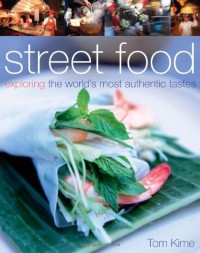
![DK Eyewitness Travel Guides — Jerusalem, the Holy Land (2007)[Eyewitness Travel Guides]](https://s3proxy.cdn-zlib.sk/covers200/collections/genesis/0177e716a41139af2521f403d36dad66fd1a3d50fa3e1238c80e40c28f492ae2.jpg)
